While many four-footers love car rides, some dogs are so fear-stricken that the joy of travel is lost, making trips to the park, vet, or groomer stressful.
Canine car anxiety can be isolating and hard to handle, but there are ways to overcome this challenge and help your best fur friend travel more comfortably.
We’ll discuss ways to address your dog’s car anxiety and make her rides easier below.
Ways to Cure Dog Car Anxiety: Key Takeaways
- Many dogs become anxious or fearful before or during car rides. This anxiety may occur because your dog suffers motion sickness while riding, the loud and unfamiliar noises may frighten her, or any of several other reasons.
- Fortunately, there are several ways you can address this kind of dog car anxiety. Things like calming supplements or garments will help in some cases, while prescription dog anxiety meds may be required for dogs with extreme car anxiety.
- Ideally, you’ll want to nip dog car anxiety in the bud, and prevent it before it ever develops. You can do this by taking a gentle, supportive, and gradual approach to car trips, preferably beginning while your pooch is still a pup.
Why Do Dogs Become Anxious in the Car?
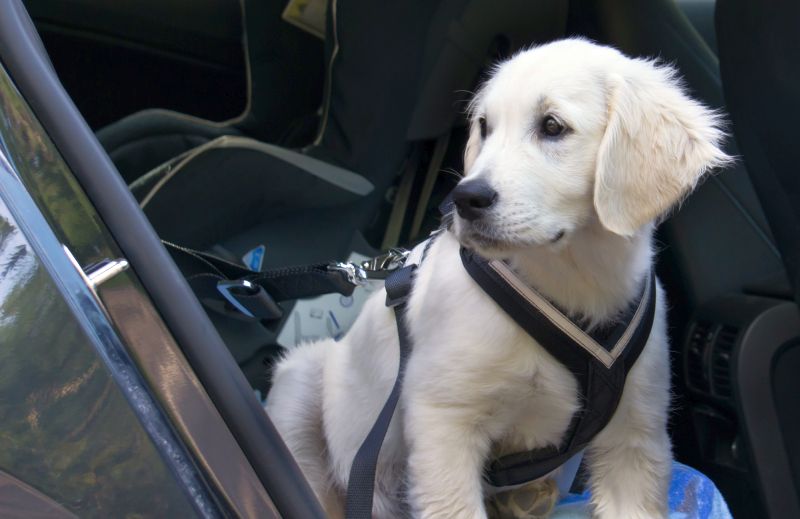
So why do some pups dislike car rides while others adore them? Well, that depends on the doggo. There are a few main culprits behind car anxiety in dogs, with some being easier to identify than others.
A few of the most common causes of canine car anxiety include:
Motion Sickness
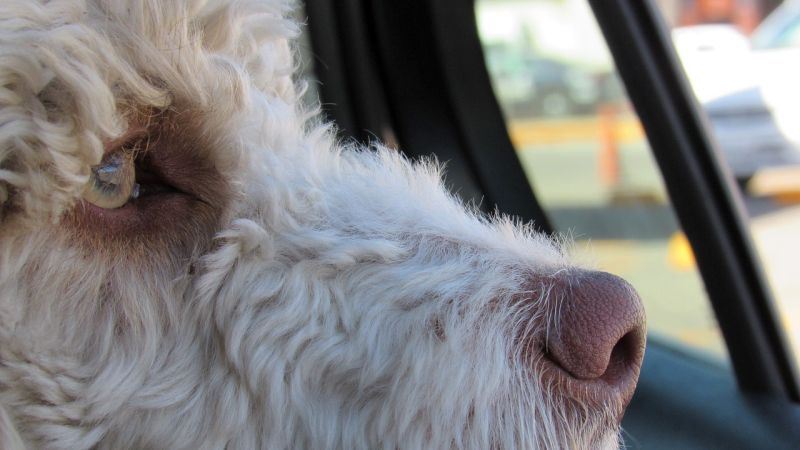
Like us, dogs can suffer the misery of car sickness.
Particularly common in puppies, motion sickness often leads to stomach upset, which is generally easy to spot due to vomiting. Unfortunately, this isn’t always the case, and some dogs suffering from motion sickness may exhibit less obvious signs, like excessive drooling, whining, yawning, and restlessness.
Frightening Noises
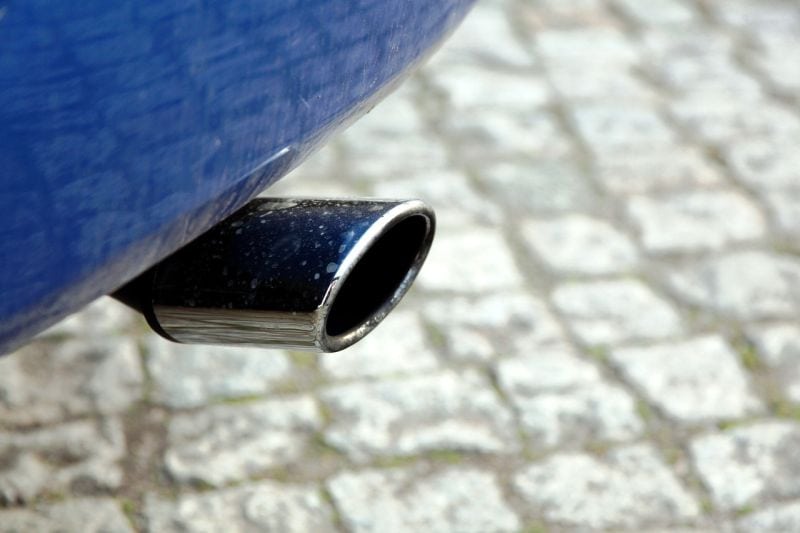
Driving in the car isn’t as calm as hanging out on the couch, as road sounds are often loud and unpredictable. From honking to sirens to squealing tires, it’s no walk in the park – it can even be downright terrifying.
Your dog may also struggle if you play loud music, as canine hearing is far more sensitive than ours.
Unfamiliarity with the Car
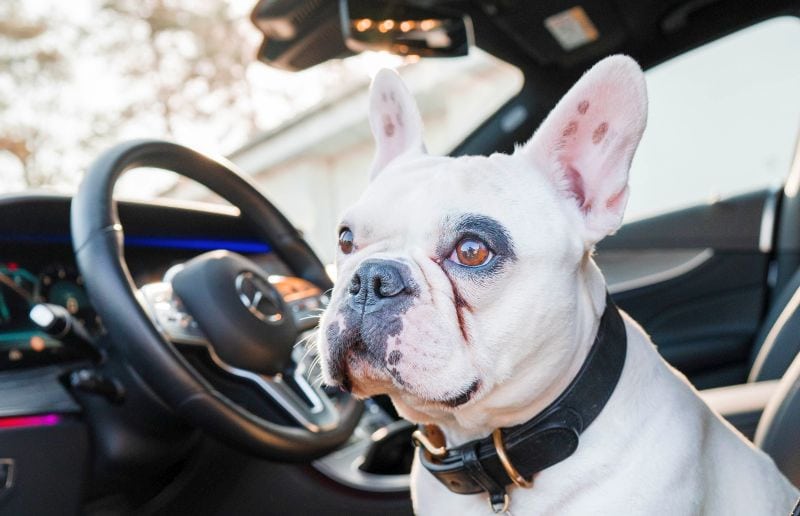
Traveling in a car is normal to us, but it can be confusing and downright scary for dogs. We know our destination, but your dog only knows that she’s getting into a new space that looks, smells, and sounds funny.
Some four-footers may quickly adjust to car rides without issue, but for anxiety-prone puppers lacking confidence, this unfamiliarity presents a major challenge.
General Pain or Discomfort
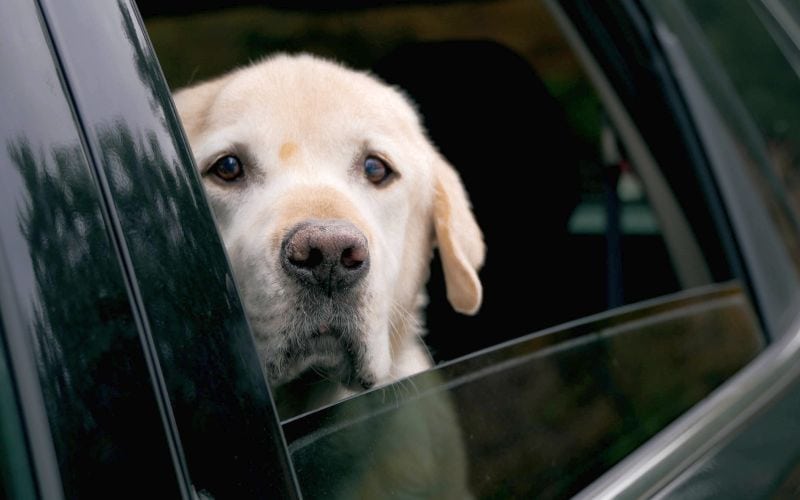
Traveling might be a pain for your dog – literally. This is especially common for larger breeds who have difficulty fitting into cars comfortably or older pups suffering from sore or stiff joints.
Your dog’s travel crate or carrier can also be an issue, particularly if the device is too small or forces your canine into an awkward position.
Stimulus Overload
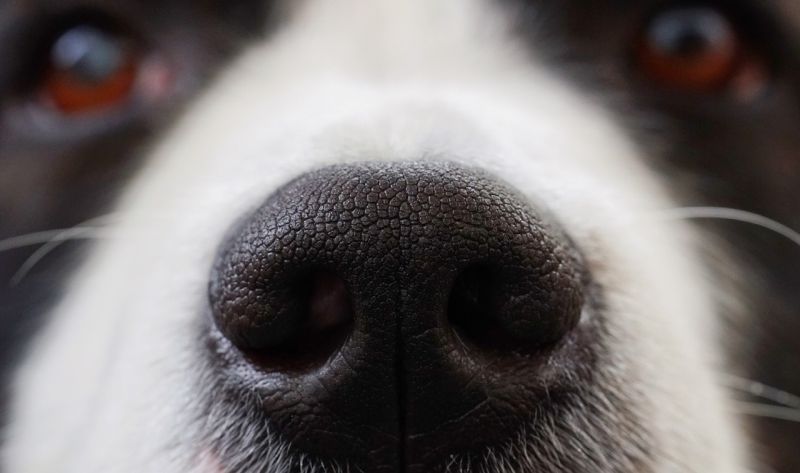
Along with the sounds of the road, traveling by car introduces all sorts of new sights, smells, and experiences that can be more than overwhelming to your dog.
Remember: You may notice a strong scent or two while on the go, but with her super sniffer, your dog is bombarded with thousands of unfamiliar odors.
Negative Associations
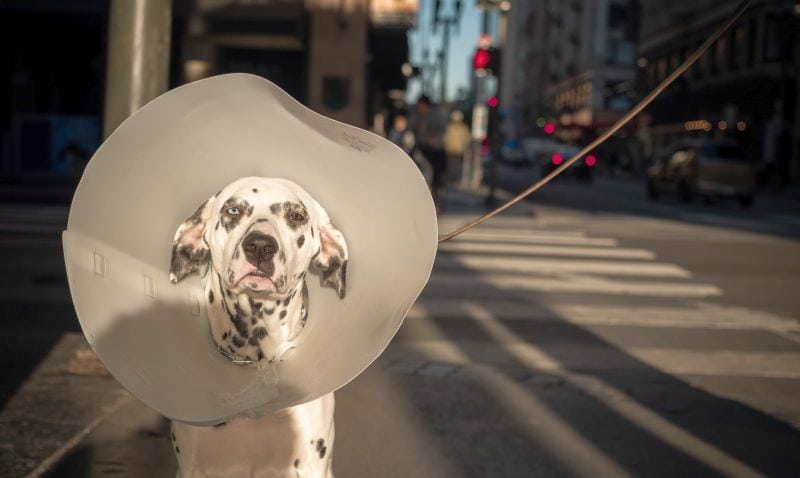
A bad experience can sour your dog to car rides, such as a negative vet appointment or, in extreme cases, a car accident. Your pup may also remember all those crazy road noises we talked about and associate them with every car ride, leading to her anxiety.
Figuring out what’s making your dog anxious is only your first hurdle to overcome, and while it can be tricky in some instances, the good news is, once you’ve identified the problem, you can work toward a solution.
Symptoms of Car Anxiety in Dogs: How to Spot Four-Footer Fear
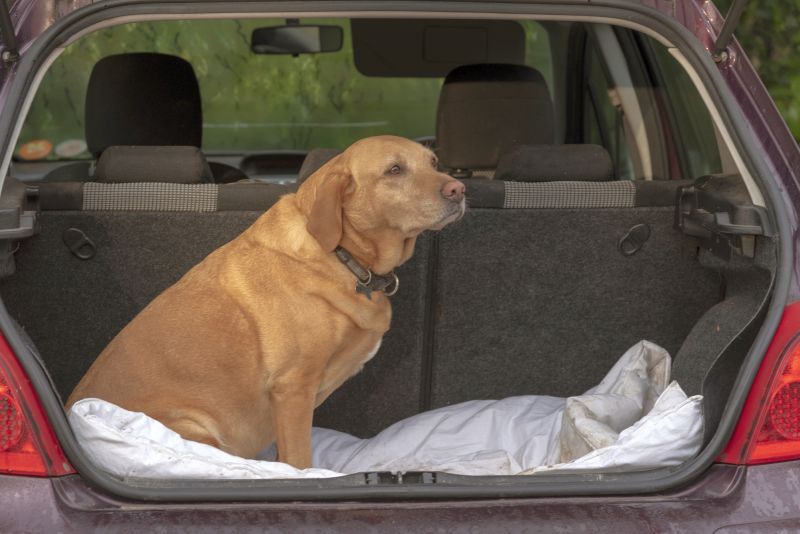
Signs of car anxiety in dogs mirror other forms of canine anxiety in many ways, including:
- Shaking
- Heavy panting
- Excessive yawning
- Drooling (often excessively)
- Pacing or refusing to settle
- Whining, barking, or other vocalizations
- Urinating or defecating
- Pawing at doors or windows
- Destructive chewing
Some dogs experience greater distress than others and have more obvious reactions, while others may be talented at masking anxiety.
All degrees of canine car anxiety should be addressed, however. Not only is it unhealthy for your dog to be stressed out, but untreated anxiety can quickly become dangerous if your dog distracts you while you’re driving.
19 Ways to Help Cure Your Dog’s Car Anxiety
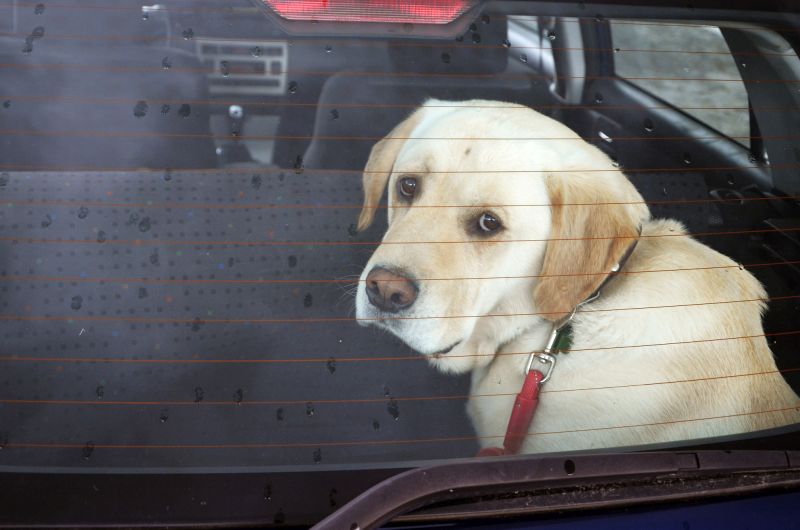
Thankfully, your dog isn’t doomed to a life of car anxiety. You can combat this joy-robbing problem in several ways, depending on the cause of your dog’s car aversion.
Here are the top ways to help your dog overcome travel anxiety.
1. Combat motion sickness.
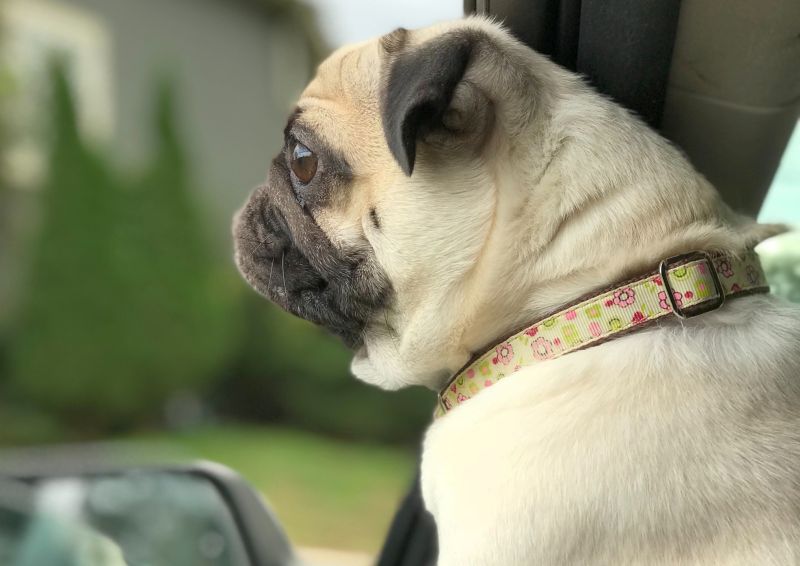
If your dog is experiencing motion sickness, you have to address it first so she can travel comfortably. Otherwise, she’ll always dislike car rides.
For starters, you want to avoid food and water breaks before car travel to prevent her tummy from tumbling. You also want to give her plenty of time to potty beforehand.
In the car, let your dog look out the window instead of kenneling her without a view. This can be done by providing a dog booster car seat or placing her harness hookup in a location where she has a window view. Cracking a window or turning on the air conditioning to provide a steady stream of cool, fresh air can also help prevent car sickness.
Dogs suffering from severe car sickness may need anti-nausea medications before travel. If your dog experiences frequent vomiting or retching during car rides, make an appointment with your vet to discuss the best options for her.
2. Deploy a backseat buddy.
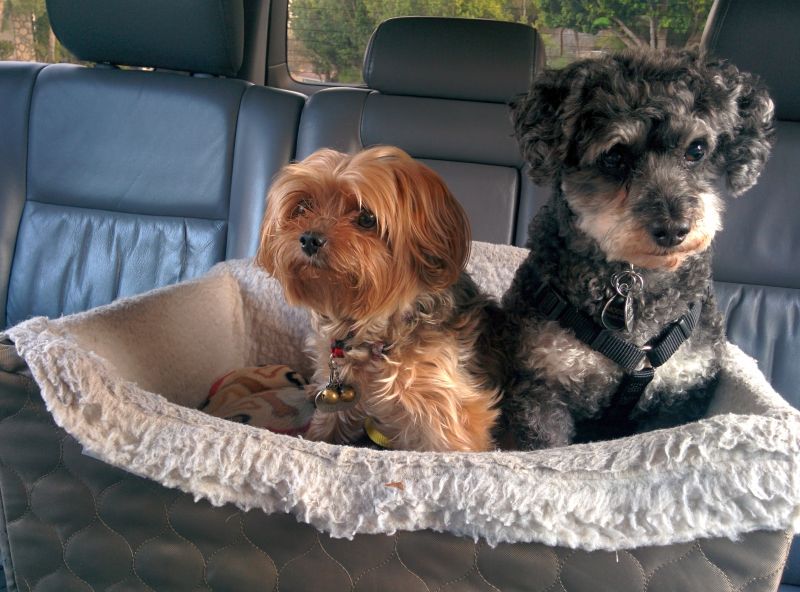
Having a passenger sit with your dog can alleviate travel anxiety. The presence of a person or even another dog can help her feel more confident, allowing her to enjoy rather than fear car rides.
This can also prevent dangerous behaviors, such as trying to escape or jumping unexpectedly in your lap while driving.
3. Expose her to the car in slow and steady fashion.
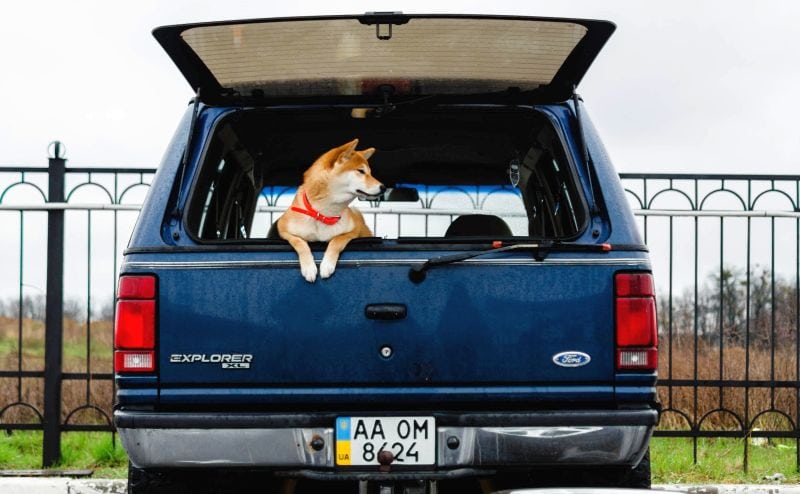
Don’t rush the car-familiarization process. Start at a slow and steady pace, gradually working up into longer car rides.
You might begin by simply hanging out in the car together while it’s parked and off, then work up to starting the engine, driving around the block, and so on.
This gives your dog a chance to adjust to the sights, sounds, and smells of your car over time rather than forcing her to handle everything at once. It also builds confidence, which is key in overcoming travel anxiety for many dogs.
4. Provide positive reinforcement.
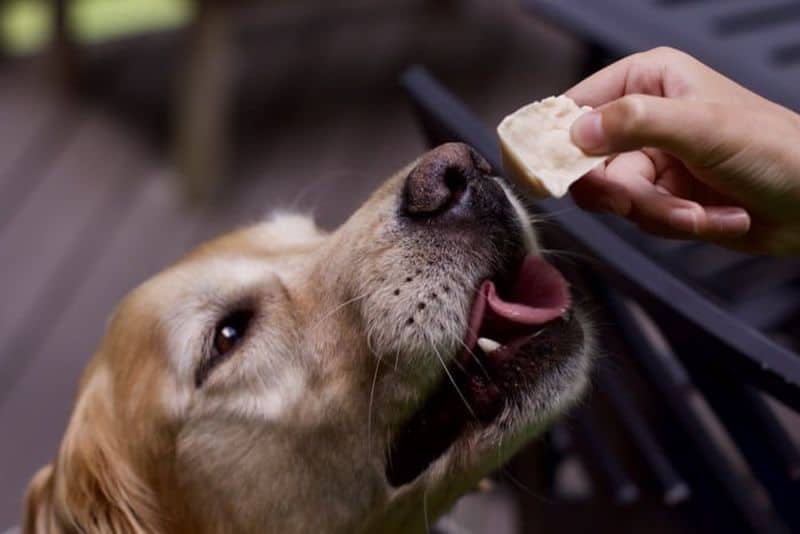
Maintain a positive attitude with your floof to keep travel anxieties at bay.
When she hops into the car or travel crate, offer lots of praise and a high-value treat or two if she’s not prone to motion sickness. The goal is to make car rides seem like the best thing ever, so she associates travel with rewards. This can be done even if you’re hanging out in the car without going anywhere.
Never yell at or punish your dog for fearing the car or refusing to get in. That will only worsen her travel anxiety.
5. Ride with familiar scents or toys.
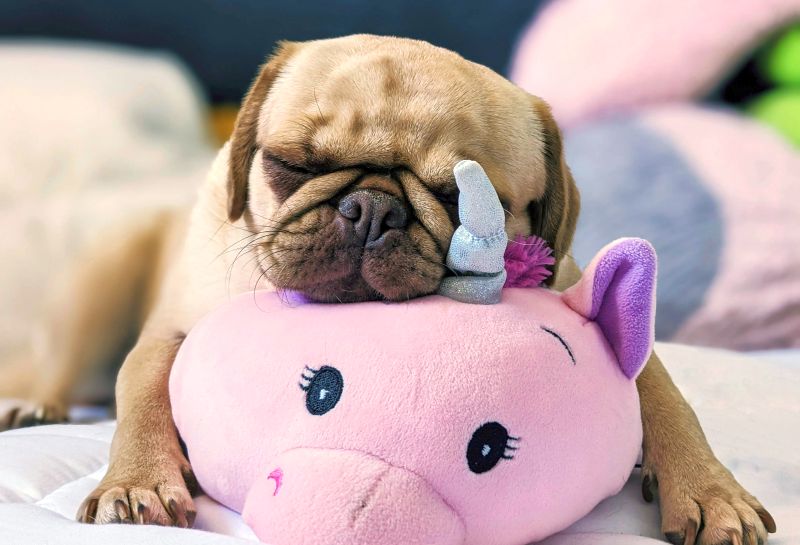
Bringing along your dog’s favorite toy can make a new, uncertain experience less intimidating.
Make sure it’s nothing that will be too distracting or dangerous for you or your dog while driving, such as a tennis ball or a toy with a loud squeaker. Your dog’s favorite blanket or one of your t-shirts can work in place of a toy.
6. Consider using Rescue Remedy.
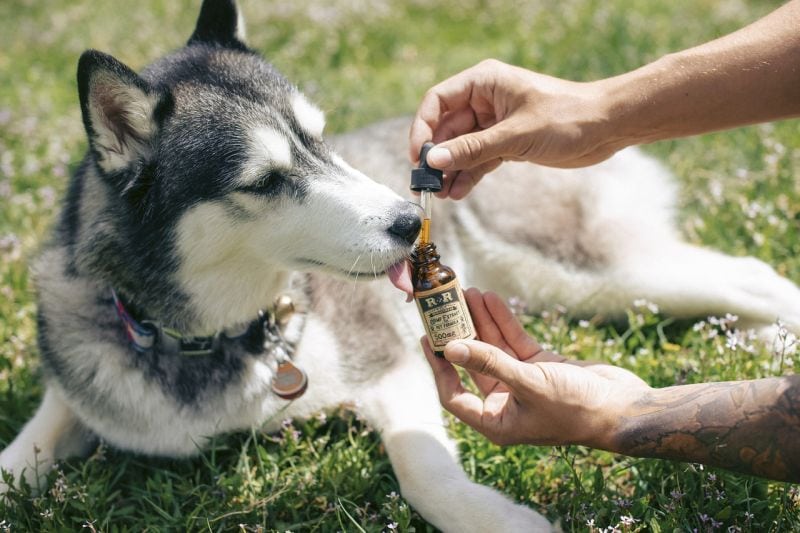
Rescue Remedy is an alcohol-free tonic that some owners swear by (though there’s little empirical evidence backing its efficacy).
Made with five dog-safe flower extracts, it’s said to calm canines and other animals during stressful events, such as travel. You can easily add the drops to your dog’s food, treats, or water to administer, though this aspect can be an issue if your dog experiences motion sickness during car rides.
As with other all-natural canine calming supplements, pet owners report mixed results with this product. However, there’s no harm trying if your vet gives you the OK.
7. Keep the temperatures cool.
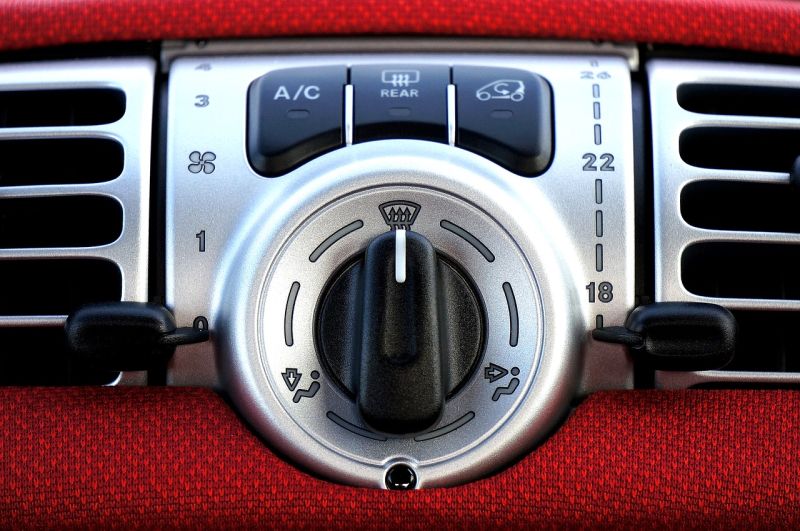
Air conditioning can make car rides more comfortable for your dog. This is important even if the vehicle doesn’t feel warm to you in the front seat.
For one, your dog has a built-in fur coat, and secondly, your stressed-out pup may be panting and working herself up, raising her body temperature more than normal. Air conditioning provides a constant stream of fresh air, making your four-footer feel less trapped.
It can also help to move your dog’s car travel harness or crate under an air vent to ensure she’s receiving enough air, though be mindful that you’re not freezing her toe beans off. This is more of a concern with small, short-haired, and skinny doggos. As for dense-coated breeds like huskies, they’ll likely more than appreciate the cool air.
Need a way to monitor your car’s climate? Check out our review of the Waggle Car Temperature Monitor for Pets!
8. Open the car windows.
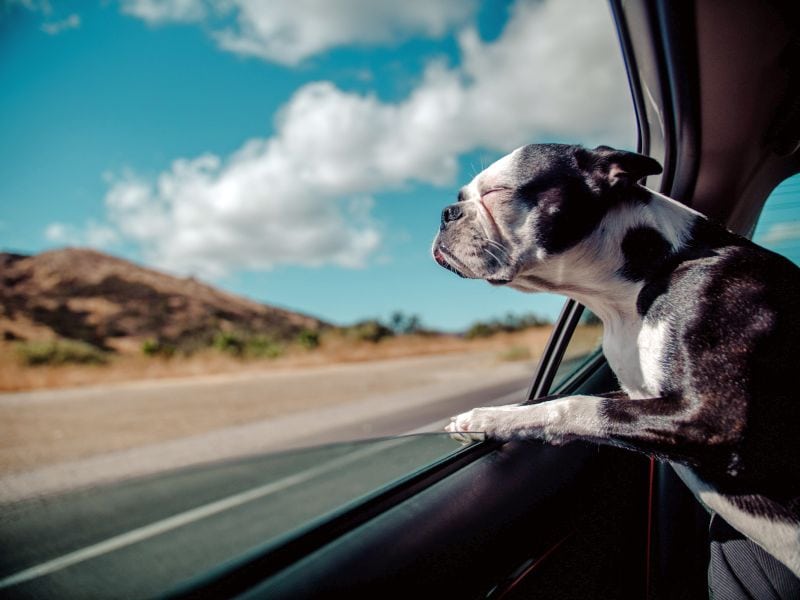
Lowering a window or two to let in some fresh air can help calm some doggos as well. This cools your pup and eliminates the trapped sensation we’ve mentioned.
You only need to open the window an inch or two, however. Opening the windows more should be avoided, not only for safety’s sake but because the increase in noise and smells can be overwhelming.
If your dog fears road-noise, skip lowering the windows and stick to turning the air conditioning on low. The added wind sounds can worsen her anxiety.
9. Exercise your pooch in advance.
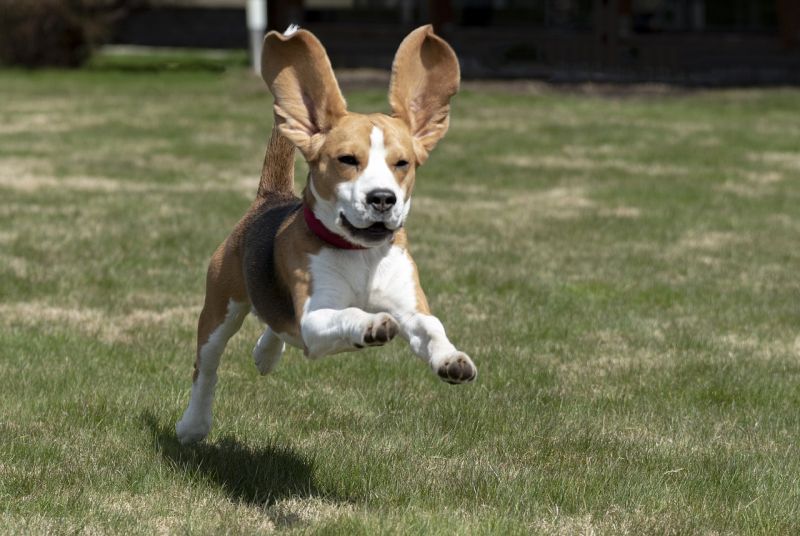
Try to squeeze in a walk or a round of backyard play before riding in the car with your canine.
Exercise can tire your dog out and make her less prone to restlessness. It can also help her wind down and possibly nap during a car ride for a peaceful pup journey.
Before a car ride, the best forms of exercise work your dog’s brain and body, such as a sniffari walk or agility session. However, it would be best if you didn’t hop right from exercise to riding in the car, as your dog will be too amped up. Have a “cool down” window of 10 minutes or so after exercise where she mellows out, then get in the car.
10. Play soothing music.
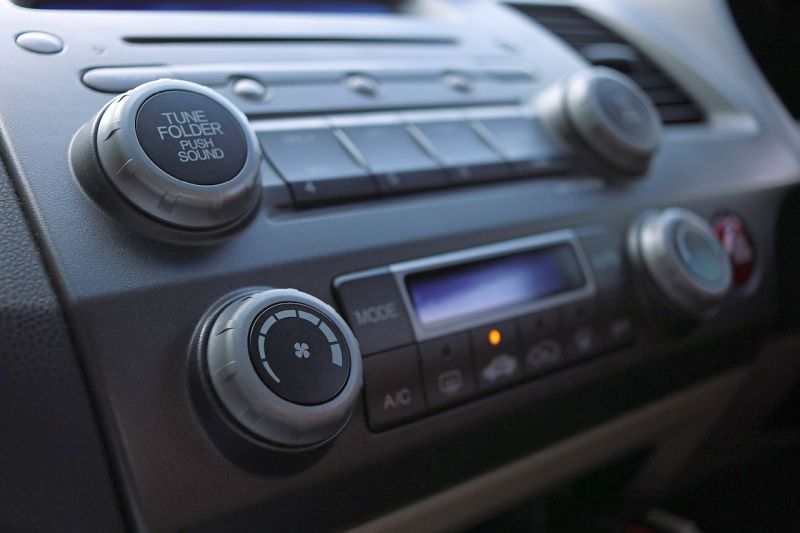
Turning on soft music can help muffle the sounds of the road. Just don’t crank the volume up too high — remember, your dog’s hearing is very sensitive.
Easy-listening, chill jazz, or classical music are best, as heavy bass can be frightening.
11. Try using a crate.
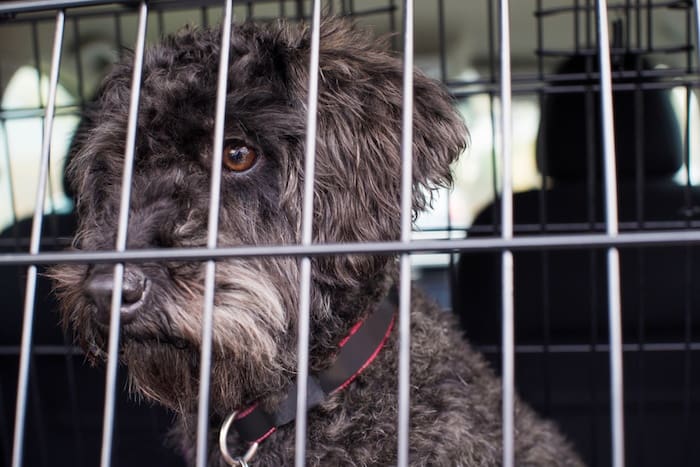
Traveling by crate can make your dog feel more secure than sitting tethered via a leash, booster seat, or travel harness.
A travel dog crate designed for car use provides a safe hideaway that blocks out most of the weird sights seen during driving, such as flashing lights and tall vehicles. It can also muffle some road noises. Crate-trained pups may prefer a travel crate, actually, as a continuation of their at-home hangout.
Not only is traveling in a crash-tested crate ideal for anxiety, but it’s also the safest way for your dog to travel, period. It provides an extra layer of protection in case of an accident and prevents all sorts of backseat mischief.
12. Use car harnesses and seatbelts.
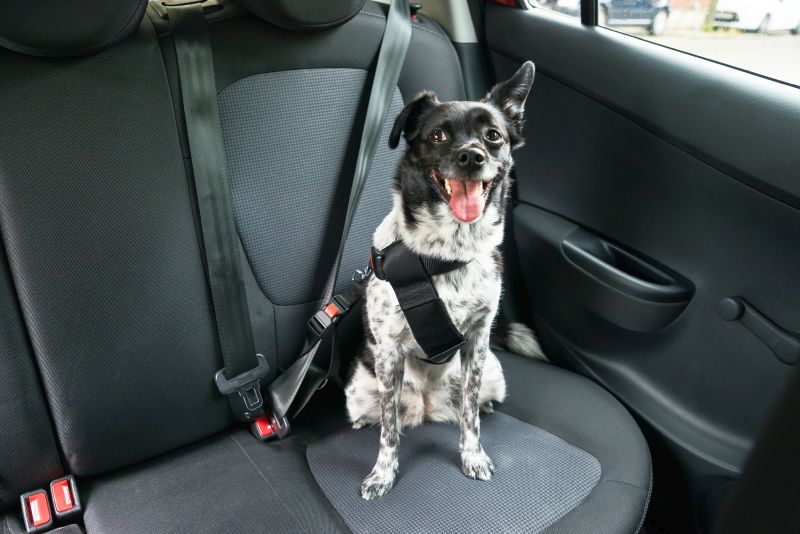
Like crates, doggy seatbelts and travel harnesses can help your dog feel more secure by forcing her to settle rather than pace.
Securing your dog via a travel harness or leash is safer than leaving her loose while driving and in the event of an accident. It’s also the law in most places.
At the very least, consider using a canine car barrier to keep her safely contained in the back of the car.
13. Consider using CBD supplements.

CBD has been shown to reduce anxiety in humans, and recently, the product has gone to the dogs, with various CBD products popping up to combat canine anxiety, including oil tonics, treats, and supplements.
CBD oil is your best bet for occasional car travel, as your dog’s body absorbs it faster, providing quick results. It also won’t churn in your dog’s stomach like CBD treats, which can be an issue for dogs with motion sickness.
14. Fit your dog with a calming garment.
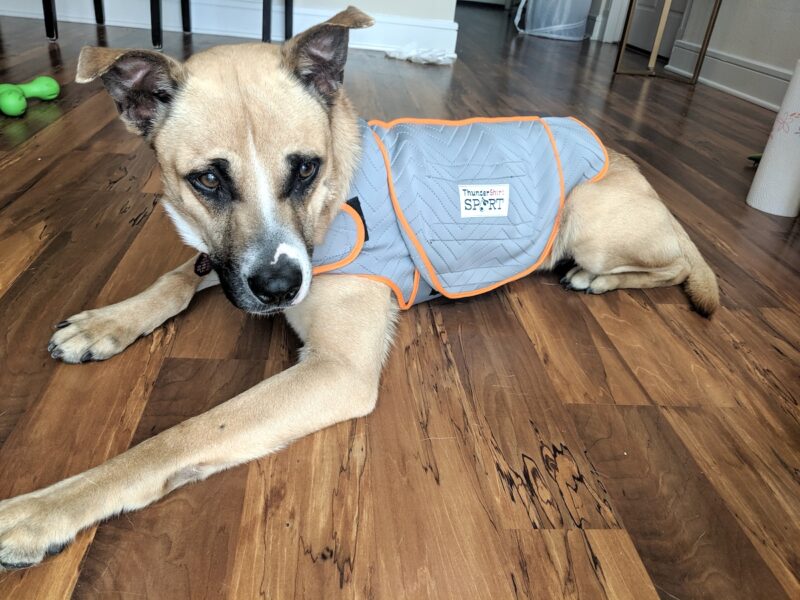
Using a calming garment such as a Thundershirt or other compression accessory can help relax your dog during travel. These snug-fitting garments provide gentle, ongoing pressure to your pup’s body that can help her feel more secure, similar to how a weighted blanket soothes sleeping humans with anxiety.
You can buy the classic Thundershirt product, or you can try a DIY version of the Thundershirt for a more customized look.
15. Give your canine a calming collar.
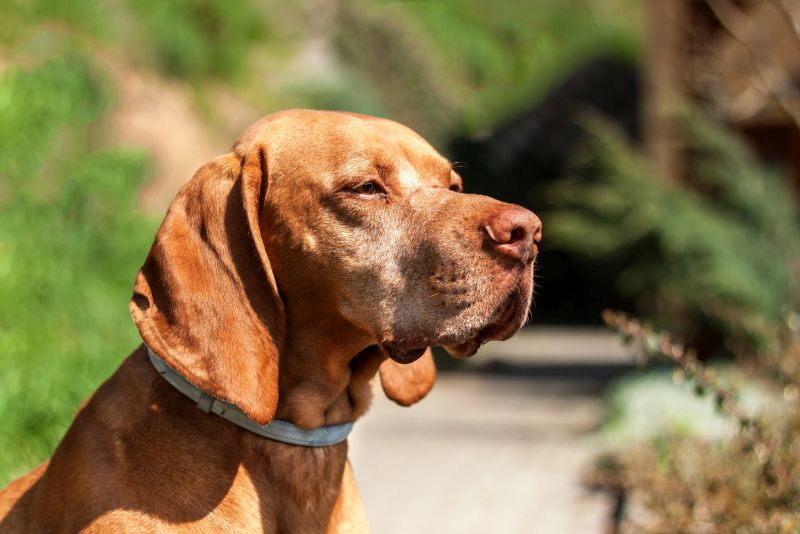
Dog calming collars are coated in an all-natural, dog-safe solution that promotes relaxation. This includes scents and pheromones made to simulate hormones released by mother dogs.
Calming collars are generally thinner than traditional collars and aren’t meant to be attached to your dog’s lead. Instead, they’re worn in addition to your dog’s regular collar or harness. Pup parents seeking a drug-free solution or ongoing canine anxiety relief may prefer this option over others.
16. Put your dog in the backseat with a view of you.
While it’s true that some dogs feel more comfortable in a crate while driving, if the only place your dog’s crate will fit is in the trunk’s cargo area, you might want to reconsider using the crate.
One study (admittedly a small one) measured four different dogs’ heart rates when placed in various areas of a moving vehicle. The study found that dogs were happiest and most relaxed when sitting in the back seat with their owner in view. In this position, the dogs’ heart rates decreased by 9.5% from their baseline.
The most stressful location for dogs was in the back cargo area of the car, with dogs’ heart rates increasing +20.4% from baseline.
17. Talk to your vet about medications.
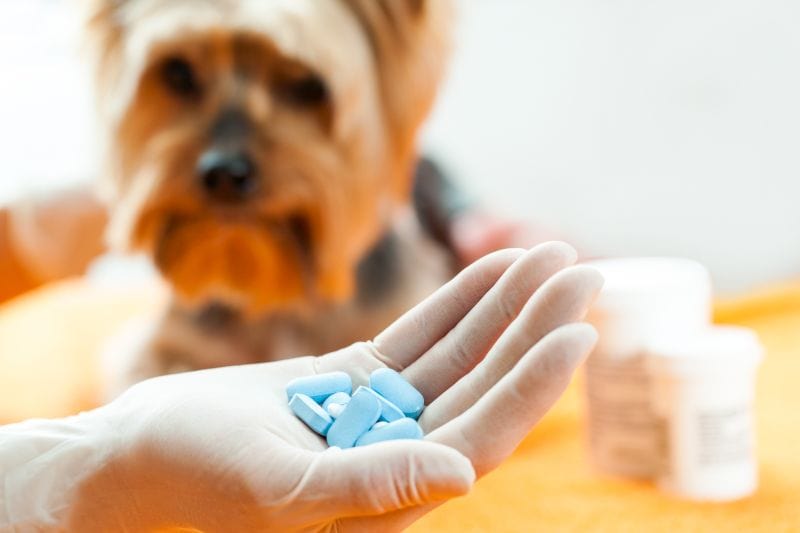
Despite your best efforts, some dogs suffering from severe car anxiety may need medication to control it. This isn’t a failure or weakness on your part. Your dog simply needs extra help, and there is no harm in doing everything possible to help her relax.
Call your vet and discuss what medications are appropriate for your dog’s unique needs, as there are over-the-counter and prescribed options available.
Hey gang, Megan here! My own dog Remy has pretty bad car anxiety and will regularly tremble in the car. For our road trip, I talked to my vet about getting some medication for him, and she prescribed Gabapentin. Remy has already taken Gabapentin after his surgery, so we knew he reacted safely to it.
It did wonders – within a half hour of taking it Remy completely chilled out without being knocked unconscious.
Not crazy about the idea of medications? There are plenty of naturally calming canine supplements out there that you can try.
Some supplements contain ingredients that promote calming, like L-tryptophan, valerian root, and chamomile.
Usually formed into chews, treats, or tonics, canine calming supplements have a mixed bag of results, with some owners claiming they’re must-haves for anxiety, while others don’t notice much improvement in their pups.
They’re worth a shot if your vet gives you the green light, though you’ll want to follow the product’s instructions carefully and give them time to kick in before hopping in the car.
18. Provide your pup with an interactive device.
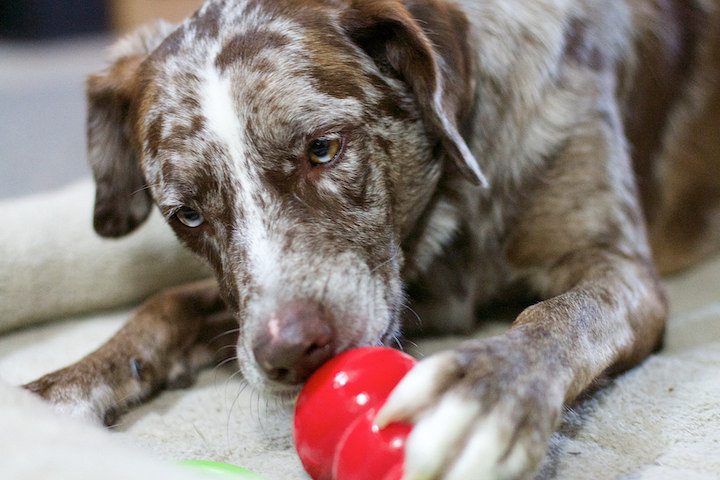
A puzzle feeder or other interactive toy can keep your dog occupied, keeping her mind on the object and off of travel. KONG toys stuffed with treats and plush cuddlers are favorites amongst anxiety dog toys.
Pick what suits your dog’s chew and play style best, and avoid anything that can be dangerous while driving, such as small chews and balls.
19. Provide your pooch with a blanket to lay on.
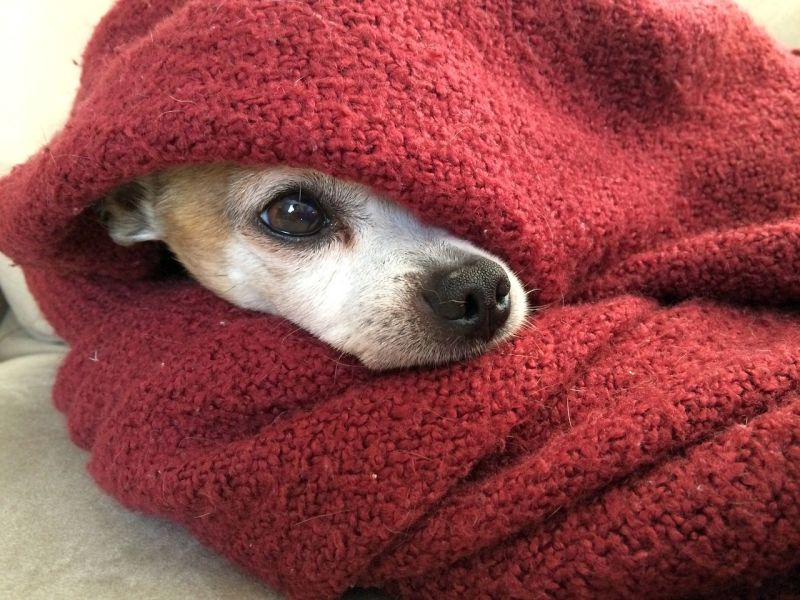
A blanket brings along scents of home and provides much-needed physical comfort on the go. Sitting in a travel crate or backseat isn’t always cozy, and the foreign feel of the material against your pup may make it hard for her to settle.
If she has something plush, she’s more likely to relax and possibly curl up for a nap.
Don’t shy away from mixing and mingling interventions. Every dog is unique, and yours may benefit from several creature comforts. Conversely, your pup may only need a few minor adjustments to enjoy car rides.
An Ounce of Prevention: Get Your Pet Used to the Car Early
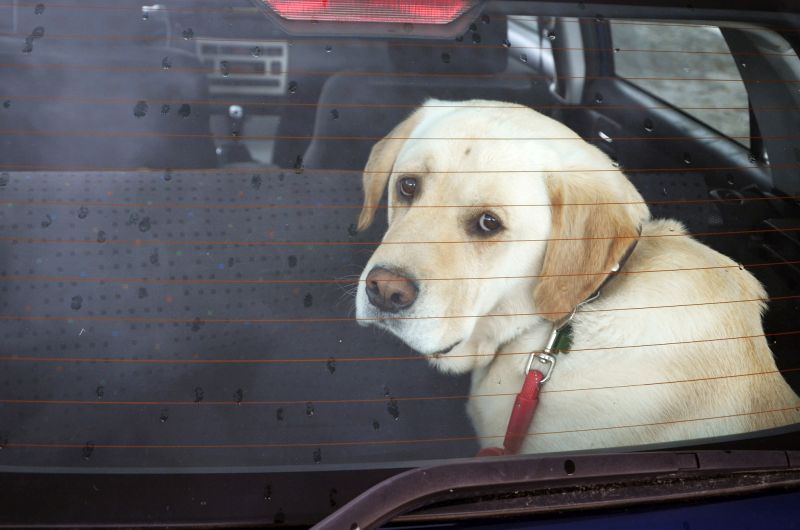
As with grooming and basic obedience, it’s best to start exposing your dog to the car from an early age to form positive associations and avoid car anxiety. This means taking your puppy in the car as soon as you can, whether you’re running errands, visiting the park, or just sitting together in a parked vehicle.
Obviously, this isn’t possible for every pup parent, as many of us adopt our doggos when they’re adults or don’t always have access to a car, but you can still start fresh on the right foot to overcome (or prevent) car anxiety.
To prevent canine car anxiety, remember to:
- Start slow. Ease your doggo into car rides. Follow her comfort cues to determine the right pace. This might mean hanging out in the driveway while the car is parked for a while and working up to sitting in the car with the engine idling or driving around the block.
- Build duration. Don’t expect your dog to jump right into long car rides. Instead, start with quick trips, such as driving to a local park.
- Keep it positive. Your pup might not always cooperate with your lesson plan, but remember to stick to positive reinforcement. Don’t yell at or punish your dog for feeling a little fearful. Remember: This is all new to your dog, and she’s counting on you to show her how fun the car can be.
- Stick to (mostly) happy trips. While vet and grooming appointments are critical, they shouldn’t be the only place your doggo goes, or she’ll learn to associate car rides with not-so-fun experiences. Make sure you mix in lots of her favorite trips, too, such as dog park adventures and pup cup stops.
- Avoid scary places. It’s kind of a no-brainer, but skip the car wash and other frightening places when you have your dog in the car. This also includes bank drive-thrus, as the vacuum system can be loud and quite scary.
Avoid feeding your pup or allowing her to drink a ton of water before car rides. Not only does this help with motion sickness, but it can prevent backseat pottying accidents.
***
Canine car anxiety is stressful for everyone, but you and your pup can travel with less fear with a few adjustments and some patience.
Has your dog ever suffered from car anxiety? What helped her overcome her car aversion? Please share with us and other pup parents in the comments. We’d love to hear!
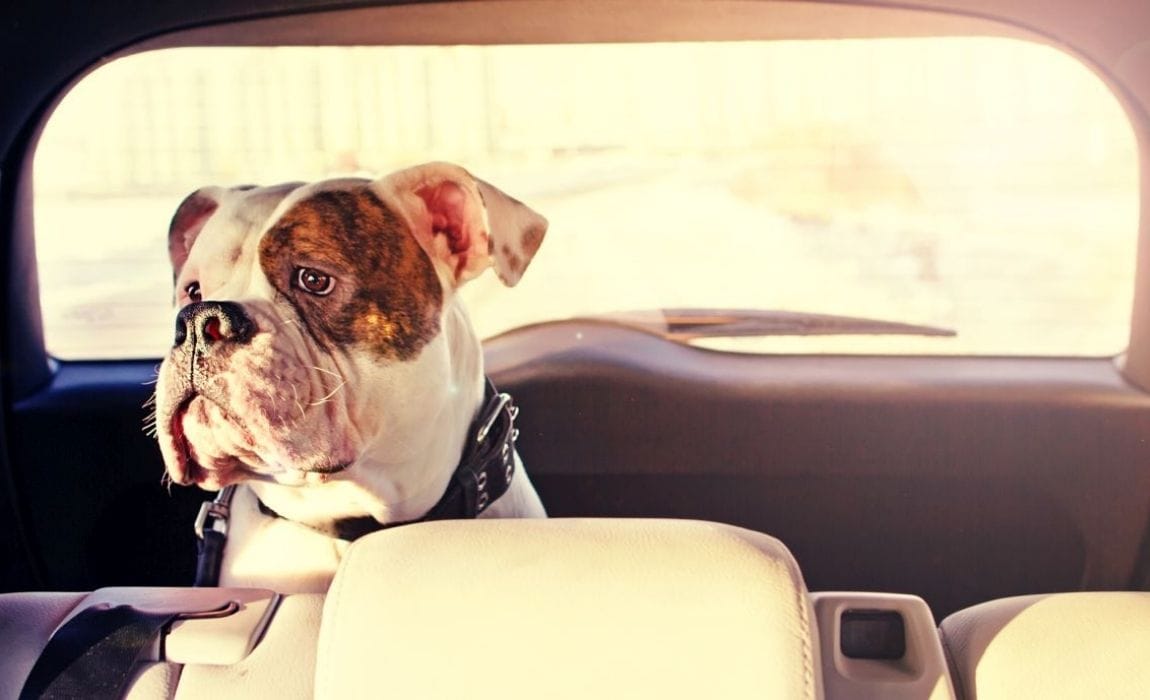

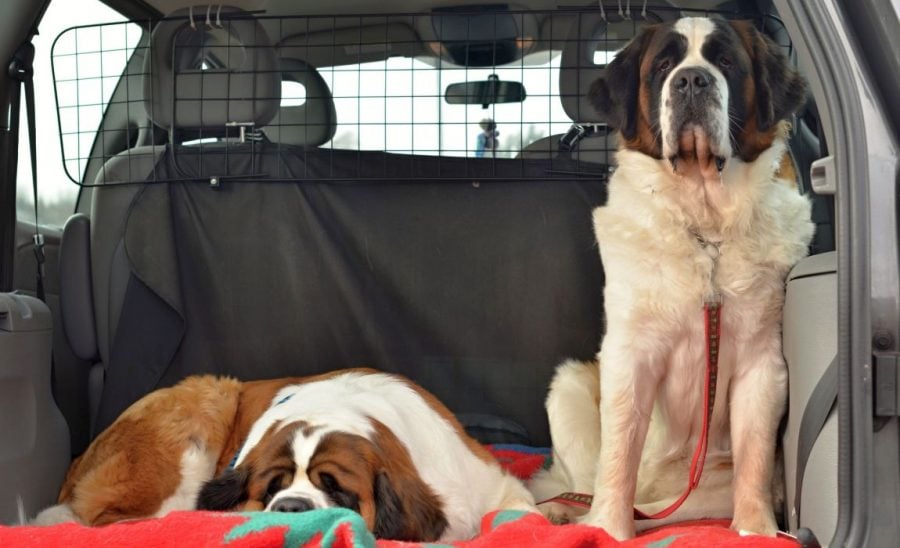


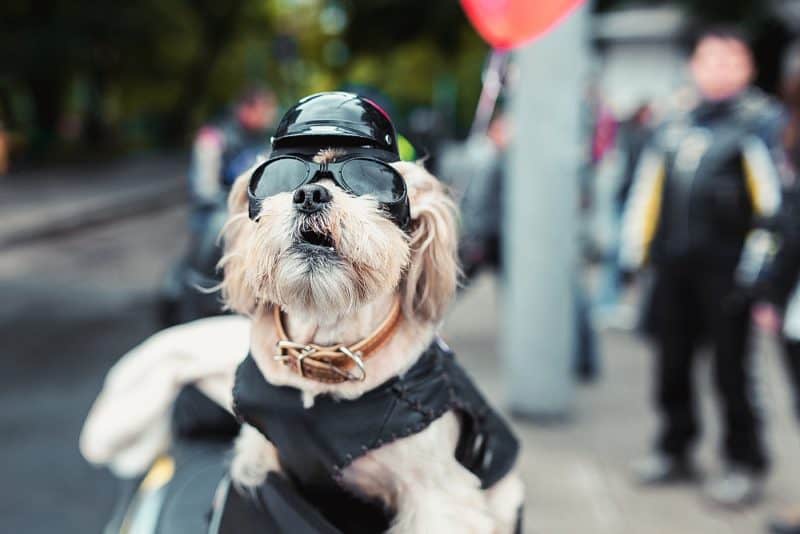
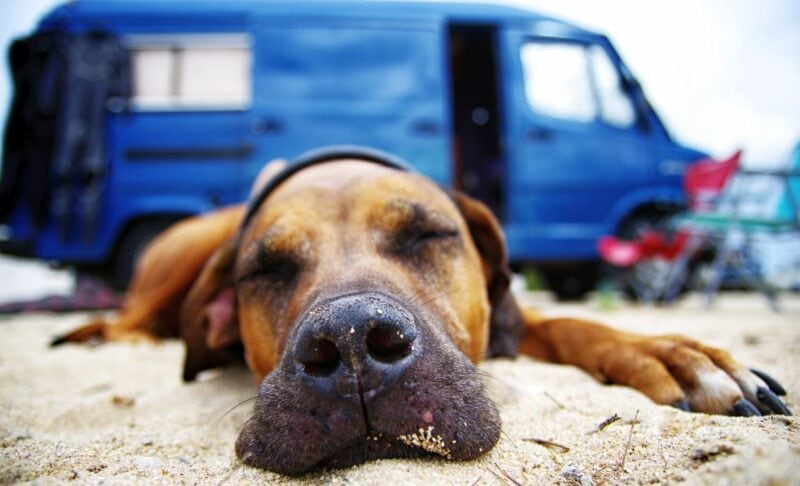
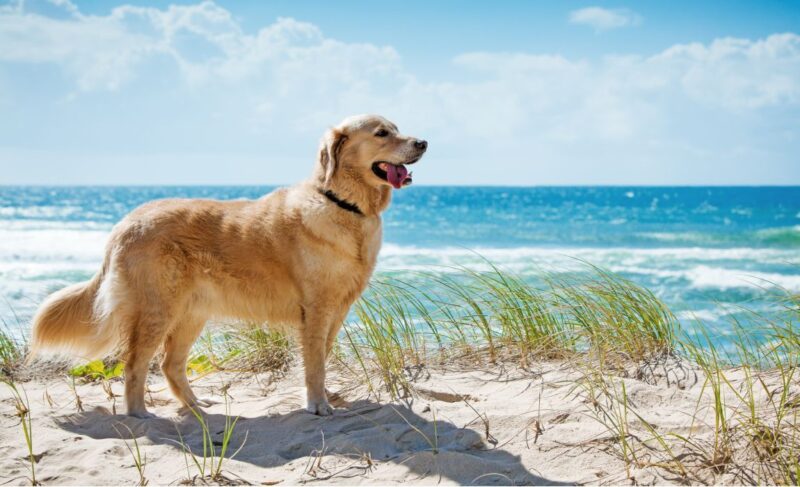
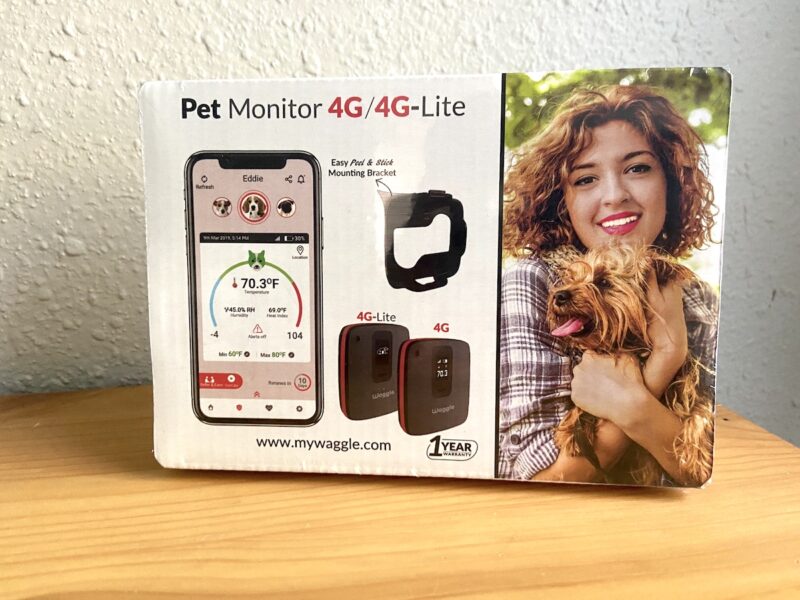
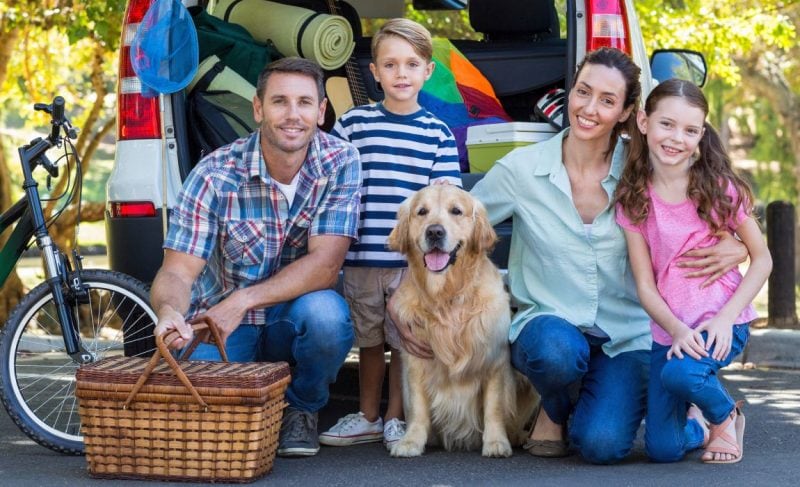
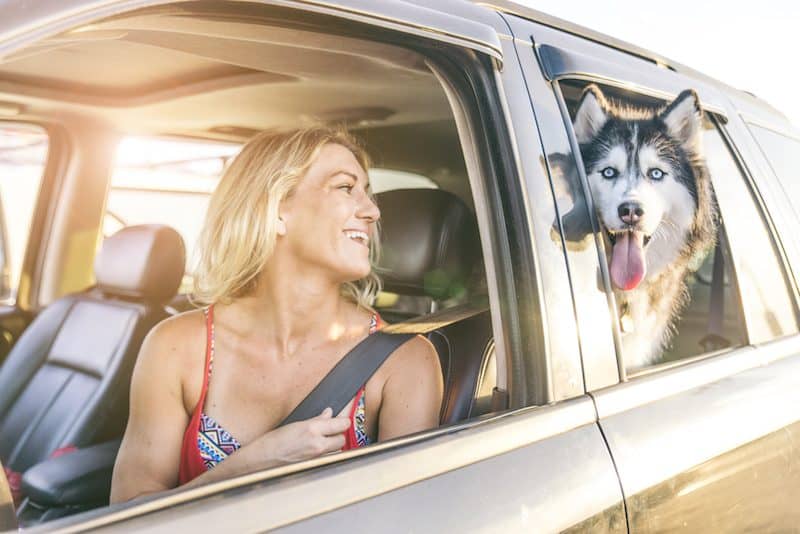
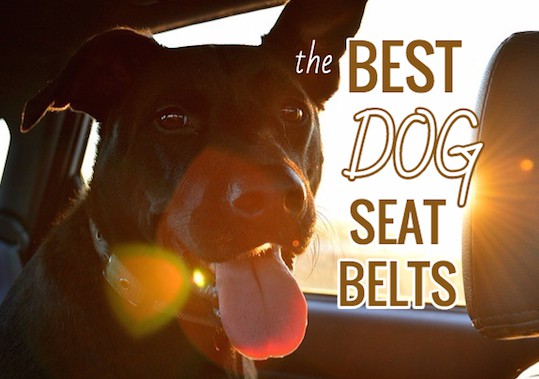

Leave a Comment